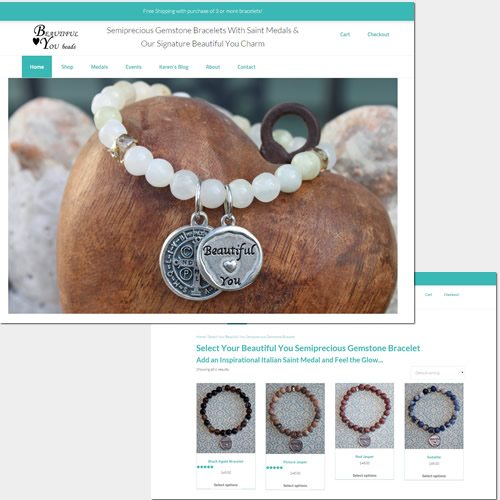
No-Worries E-commerce Website

No-Worries E-commerce Website
A couple of weeks ago, I received an e-mail Father’s Day reminder from a store where I’ve bought gifts from online before. Since I typically put off holiday gift buying to the last minute and end up paying extra for shipping, I was grateful for the reminder.
Lesson one to online merchants: EMAIL MARKETING WORKS!
With over a week before Father’s day I thought the ample lead time would save me some cash on shipping. I clicked through to the website and browsed to find some sweet treats for dad. I quickly found a nice gift of sweet snacks at a reasonable price and clicked through to the checkout page. Where I stopped. The shipping charges nearly doubled the price of the goodies. Call me cheap, but if there’s one thing I learned from my dad growing up on his farm in Minnesota it’s the value of the dollar.
That reasonably priced gift now seemed tremendously overpriced. If I was going to spend that kind of money – it had to be a better gift. So I abandoned my shopping cart and Googled “Free Shipping Father’s Day gifts”. Multiple stores came up and I quickly found a gift. It was much nicer than the original gift. I did end up spending the same as the other gift would have cost with it’s shipping charges, but I now felt like the gift I was sending was worth the money I was spending.
Lesson two to online merchants – FREE SHIPPING WORKS! Consider the value of your product. If shipping costs make your item seem extraordinarily overpriced you will lose sales.
Lesson three to online merchants. CLOSE THE SALE! If your e-mail marketing campaign is driving traffic to your site but you’re not seeing corresponding sales, make sure you look at the value you’re offering to your customers. It’s a shame when something like high shipping costs causes them abandon their shopping cart when you’ve successfully drawn them to your store with your e-mail marketing campaign.
If you’re setting up an e-commerce shop and need to accept credit cards, what’s the best solution?
There are many factors to take into consideration. First, which method will make your customers feel most comfortable in making a purchase from your website? Recently, I took a poll on LinkedIn to gauge how people feel about various methods of payment.
Poll Question: When buying something online, which method of payment do you prefer?
Here are the results:
Take poll and see results
In addition to how your customers may feel about the process, you should understand how each process works and how it will tie into your website, to your accounting practices, to your budget and to your sales expectations.
Integrating payment processing into your website:
Most “off the shelf e-commerce shopping carts” will integrate easily with merchant accounts and real-time processors such as authorize.net, or with Paypal or Google Checkout. But check with your web developer to see which method they recommend for your particular application.
Accounting and costs:
Merchant account costs seem to be increasing substantially these days with the challenging economy. Plus providers are requiring merchants to undergo an annual PCI DSS compliance that adds another expense to the annual costs. PCI DSS compliance usually requires a subscription through a company like Trustwave. Trustwave measures your risk factors through a questionnaire about your practices and through security tests of your server.
With the merchant account/real-time gateway process, merchants can expect to pay a monthly fee for the account, a monthly fee for the gateway plus the transaction fees for any charges put through to your account. It can be about $40/month before you take an order. Add in the cost for PCI DSS compliance and it’s a substantial monthly fee for some business models. For small businesses–especially start-up businesses with low-budgets–Paypal or Google checkout might be a more cost-effective solution. Both solutions have no-monthly fee plans and both have competitive transaction rates. And they are both PCI DSS compliant. In my opinion, both are also well known brands that most customers will feel comfortable using for payment.
Based on my poll, Paypal seems to have a slightly greater acceptance factor than Google Checkout. I suspect Paypal is more familiar to more people than the relatively new Google Checkout.
Whichever method you choose, make sure your client’s credit card information is encrypted as it is transmitted and that you safeguard the information. One of the advantages to using a realtime gateway like Authorize.net, or an outside vendor like Paypal or Google Checkout is that the credit card is processed and you are never in possession of the credit card number. By limiting access to your customer’s credit card information, you are limiting your liability of being involved in any sort of identity theft scenario. Plus, the transaction is automatically processed and deposited into your bank account thereby minimizing your workload.
With merchant account providers raising processing rates and charging annual fees for security (PCI DSS compliance) it makes sense for small business website owners to review merchant account providers carefully before choosing or changing a provider for online credit card processing.
I’ve had an account with the same merchant account provider for several years, but recently the rates have been creeping up, in many cases to over 4% per transaction. Add the monthly fees and the new annual PCI DSS compliance fees together and the account is costing about $500 a year before a sale is even made. That’s alot for a small business to pay in account fees. Combine the increasingly high rates with the surly customer service and it has become clear to me that it’s time to review other choices.
The criteria for my business may differ than other small businesses, but here is what I looked for when reviewing my options:
There are many merchant account providers to choose from, among the choices, Paypal and Google Checkout are becoming increasingly attractive to small business websites. They are PCI DSS compliant, their monthly costs are minimal or free and their transaction fees are competitive for small business transactions. A contract is usually not required and they are easily integrated into most shopping carts and websites.
I’ve set up many sites with Paypal but I had not tried Google checkout yet, so in the spirit of testing the product, I removed the encrypted client payment form that I used with my old merchant account on my website and replaced it with Google checkout. Set-up and installation was simple. Client approval is yet to be determined.
My perception of Google checkout vs. Paypal is that it’s a newer product and fewer people are familiar with it. Therefore, people may be less receptive to it or more receptive depending on their experiences with Paypal and with the Google brand. I’ve used it a few times when making purchases on websites and I found the purchasing process to be simple and user-friendly.
But that’s just my perception. I’m currently running a poll on LinkedIn to find out what other people prefer. Please take a minute to take the poll.
In addition to testing Google Checkout, I’m also testing the Intuit merchant services. Their rates were lower than my old account and their interface with QuickBooks makes processing transactions and accounting for them a breeze. I’m currently just using this account for offline payments as I haven’t set up a payment form on my website yet for use with this provider. But I expect if I’m happy with their product I will set up a payment form on my site to use with this account.
I’m interested in hearing about your experiences with merchant account providers — from a merchant point of view and customer point of view.
222 Pitkin Street, Suite 125
East Hartford, CT 06108
Phone: 860-432-8756
Follow us, subscribe to us, email us, or call us at 860-432-8756. We’ll use our Super Savvy Tool Belt to stay in touch however you prefer.
